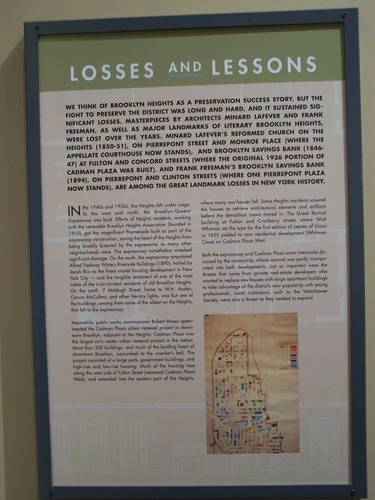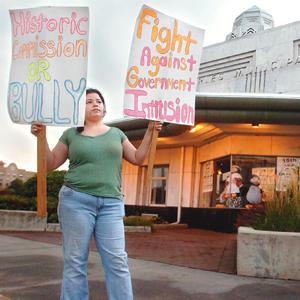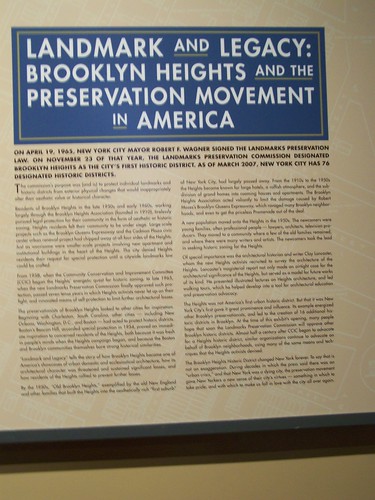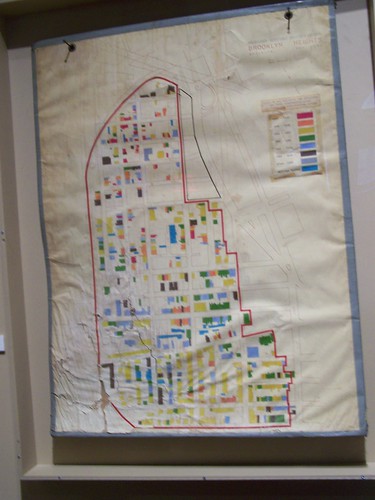Property rights vs. community values and historic preservation

Board from an exhibit at the Brooklyn Historical Society, about the Brooklyn Heights Historic District in New York City.
This is a never ending "battle" that I don't think can ever be reconciled because there are some people who don't think the community should ever have a say about other people's property, despite the reality that individual decisions about property impact others, often negatively.
Historic preservation is about maintaining quality places and community character. It also tends to stabilize neighborhoods and create demand, especially in communities that tend to be weaker real estate markets, because the housing stock is "old." In effect, historic preservation rebrands how people perceive "old," from a perception of little value to a new perception around uniqueness, identity, authenticity, and great value.

Tiffany Myles protests outside the St. Charles Municipal Center on Wednesday before a Historic Preservation Commission meeting. Myles' mother, Ann Shirley Bowie, has been fighting the commission's attempt to landmark her house. (Kendra Helmer photo, Kane County Chronicle, Illinois.)
But not everyone sees the big picture. See "First battle lost," from the Kane County Chronicle, Illinois.
DC law does not require owner consent for a property to be designated historic. But to be listed on the National Register of Historic Places--which is mostly an honorific, except that commercial properties are eligible for a 20% tax credit for qualified renovations, and the National Trust for Historic Preservation is working to pass legislation extending tax credit benefits to housing in National Register districts--owner consent is required.

This past weekend I went to the Brooklyn Historical Society and took in 3 excellent exhibits. One was Landmark and Legacy: Brooklyn Heights and the Preservation Movement in America.
I thought this exhibit was excellent, a short course in the history of the creation of neighborhood historic districts in NYC--Brooklyn Heights was the first, but also across the United States. (There is a section of the exhibit with call out quotes from newspapers, starting with a quote from a 1931 article about the creation of the nation's first historic district, in Charleston, SC, followed by two quotes from articles about the creation of the Old Georgetown Historic District in DC in 1949-1950. But the exhibit isn't a comprehensive presentation about the history of the historic preservation in the United States. It ends with a discussion of NYC, and I don't believe it covered the National Historic Preservation Act of 1966, etc.)

This hand drawn map of buildings in Brooklyn Heights and the time period during which they were constructed was created by preservation activists and used during the campaign to build awareness and support for creating historic preservation legislation for the city generally, and for designating Brooklyn Heights as New York City's first historic district.
It's the kind of exhibit that DC needs to have, and send it around to the various community organizations and street festivals throughout the city.
Labels: civic engagement, historic preservation, land use planning, law and the legal process, local history, neighborhood change, neighborhood planning, urban history



0 Comments:
Post a Comment
<< Home